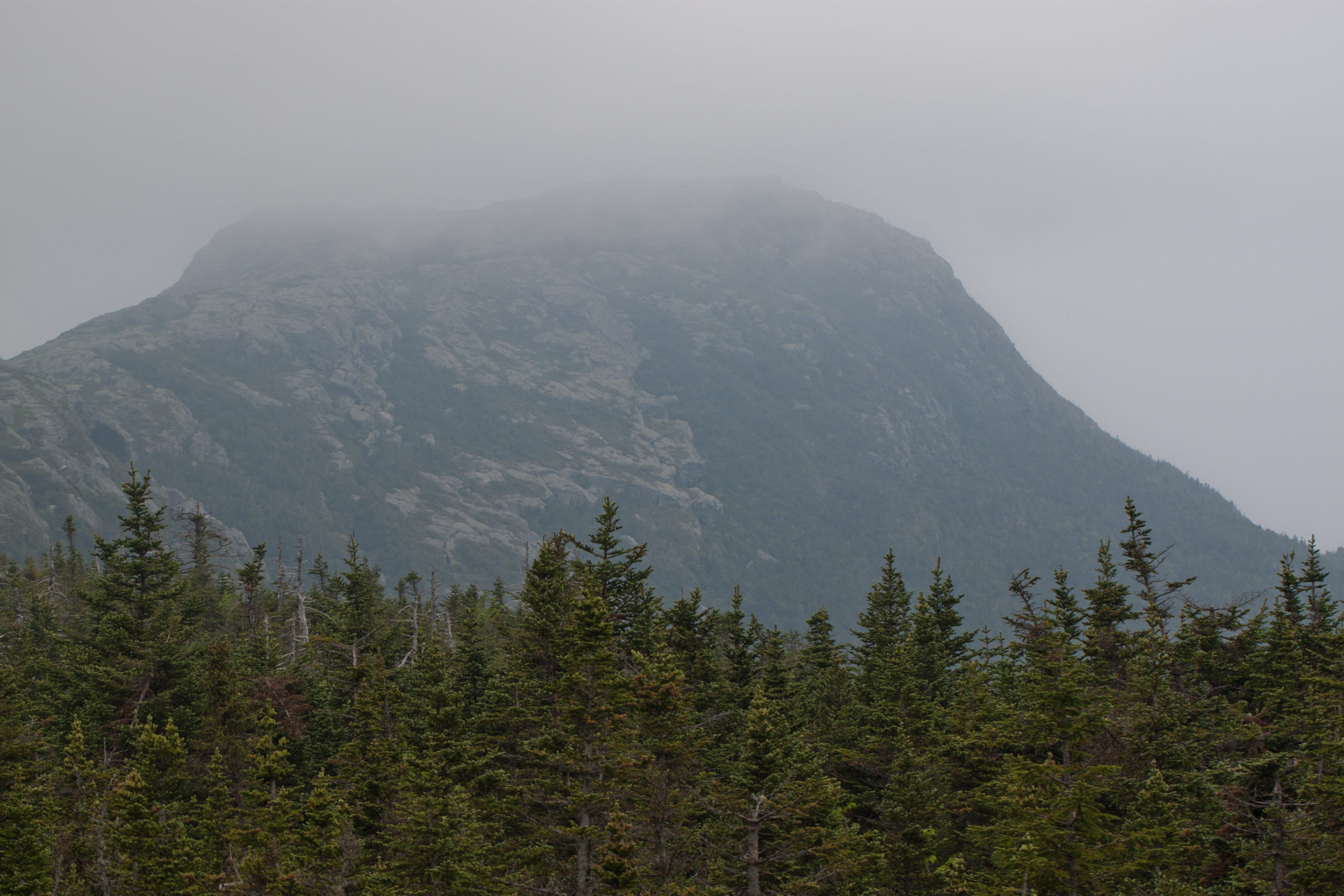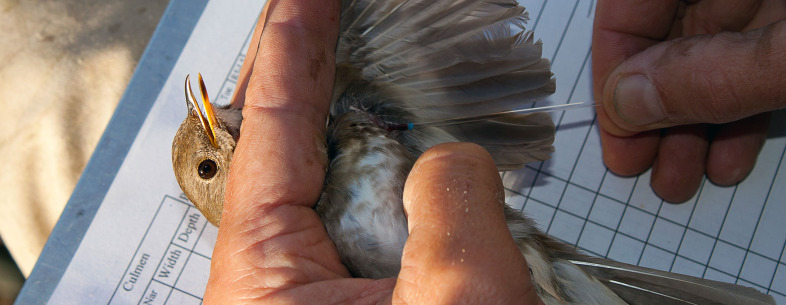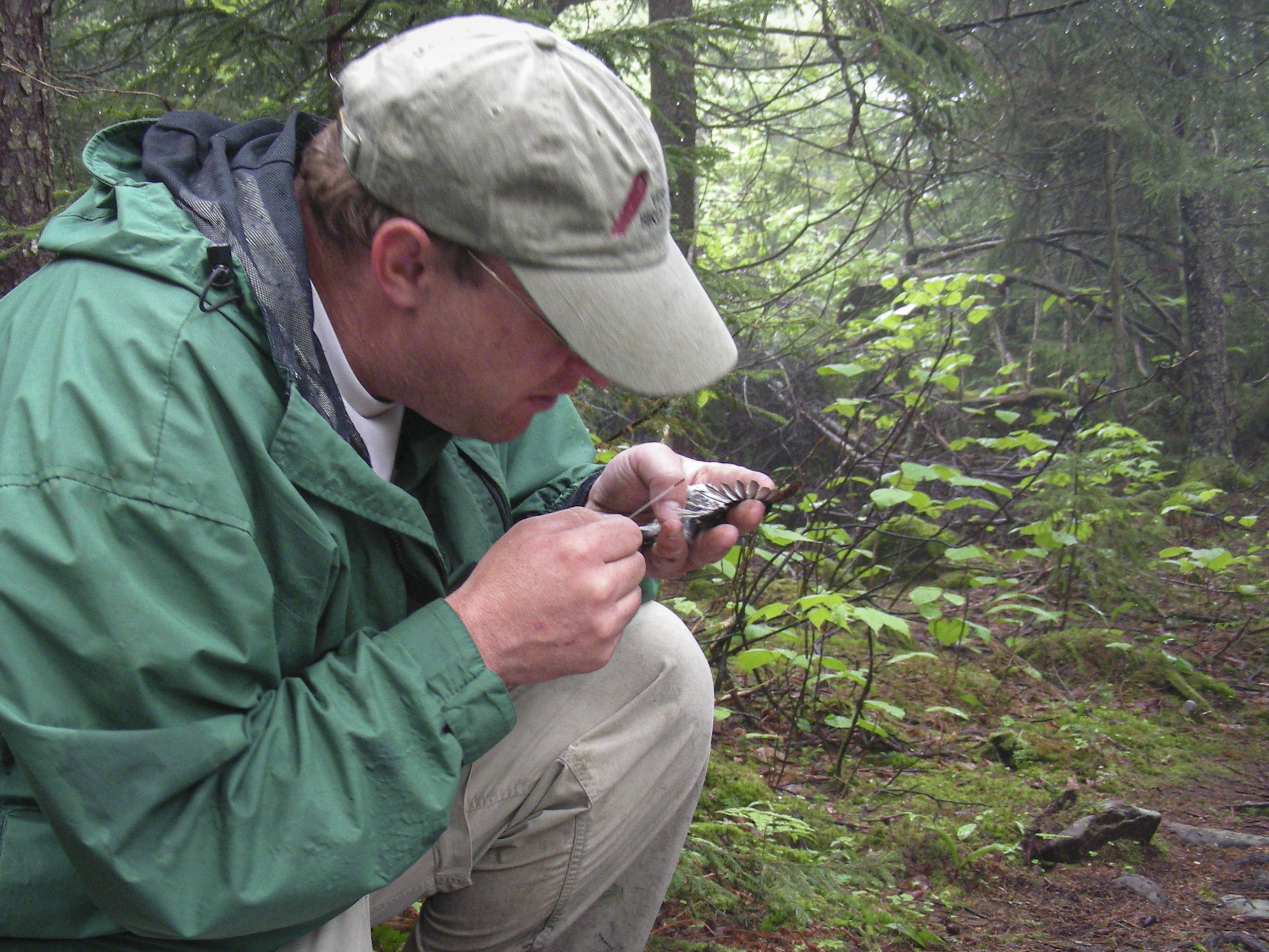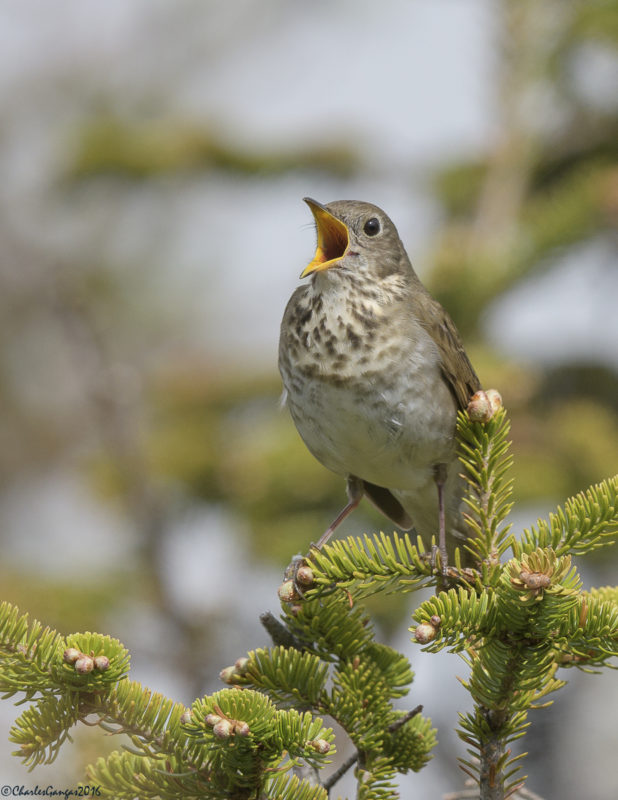In 2005, VCE published a ground-breaking paper that drew attention to the threats mercury poses to terrestrial songbirds. This publication documented pervasive mercury concentrations in the blood and feathers of mountain-dwelling Bicknell’s Thrush. Those findings not only surprised many previously skeptical scientists, who considered mercury to be strictly a problem of aquatic ecosystems, but helped spur regulations that led to reduced industrial mercury-laden emissions in the Northeast.
Four years later, VCE published another influential paper showing that mercury biomagnifies—or increases at successive trophic levels—in the food web of montane forests. After precipitation and cloud moisture deposit their atmospheric mercury on foliage and in the leaf litter, this toxic substance is taken in by living organisms. Those lowest on the food chain (plants) accumulate the lowest amounts of mercury; mercury levels then progressively increase up the food chain, from plant-eating insects, to insect-eating arthropods (mainly spiders), to salamanders, to insectivorous songbirds like Bicknell’s Thrush, to birds of prey like Sharp-shinned Hawks and Northern Saw-whet Owls.
Eager to know whether mercury concentrations had changed in the tissues of Bicknell’s Thrush since our research a decade earlier, we took advantage of our 25-year project banding this species and other breeding birds on the Mt. Mansfield ridgeline. Between 2014 and 2017, we resampled Bicknell’s Thrush, as well as the closely-related Swainson’s Thrush for comparison. We hoped that verified reductions in mercury emissions across the Northeast would be reflected in lower blood mercury levels of Bicknell’s Thrush than we had documented 10-15 years earlier. To our surprise, and disappointment, results (published in Ecotoxicology last month) did not support this. Not only were blood mercury concentrations similar between 2000–2005 and 2014–2017 (and similar between the two thrush species), but atmospheric deposition of mercury on Mt. Mansfield had not changed over that period. Further, we found no evidence that levels of mercury deposited on Mansfield are correlated with those that accumulate in thrush blood. This latter finding was unexpected and suggests that mercury cycling, transfer, and biotic uptake are complex and poorly understood in montane forests.

Atmospheric mercury deposition from cloud vapor and precipitation is the source of mercury that VCE has documented in the blood of Bicknell’s Thrush and other montane forest songbirds. Surprisingly, our recent research revealed that regional reductions in mercury emissions were not reflected in thrush blood, which remained the same over our 17-year sampling period.
Clearly, much remains to be learned about how mercury moves through montane forest biota. The fact that regional reductions in industrial mercury emissions weren’t reflected in thrush blood is puzzling, and suggests that some mercury deposited on Mansfield originates from sources outside the Northeast. Regardless, we believe that Bicknell’s Thrush remains an important bioindicator of toxic mercury availability in montane forests, and we fully intend to continue our long-term sampling.




Given that the NE is the “tailpipe” for Midwest industrial and power plant emissions that contain mercury it shouldn’t be surprising that the source of the mercury probably originates there.
Are indicated amts of mercury ‘natural’ in the blood stream of BITH? Are you able to determine what the levels are in all populations? What other birds show ‘increased’ mercury levels?